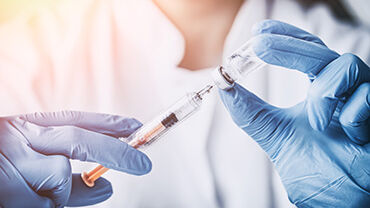Poliomyelitis
Poliomyelitis, also known as polio or infantile paralysis, is an infectious viral disease that mainly affects children. Large-scale vaccination programmes have succeeded in eliminating wild polio from most areas of the world, and efforts are ongoing to stop the polio transmission that still occurs in a few remaining countries.
Up to 70% of people who contract the disease have no symptoms and about 25% have mild symptoms, such as:
-
fever
-
headache
-
vomiting
-
diarrhoea
There are three types of polio depending on the area affected:
-
Spinal poliomyelitis (affecting the spinal cord)
-
Bulbar poliomyelitis (affecting the brain stem)
-
Bulbospinal poliomyelitis (affecting both)
Key facts
Risk for people
Children under 5 years of age are most at risk of infection, although anyone who is not vaccinated can become infected.
Paralysis occurs in less than 1% of all infections and begins with inflammation of the tissues surrounding the brain and the spinal cord, severe muscle pain and loss of sensation and mobility in different parts of the body. Weakness and paralysis appear a day or two later. The limbs most affected by paralysis are the lower limbs.
How it spreads
The disease is highly contagious and is transmitted from person to person by droplets or aerosols from the throat, or through faecal contamination of hands, utensils, food and water.
Factors contributing to transmission include
-
high population density
-
poor health service infrastructure
-
poor sanitation
-
high incidence of diarrhoeal diseases
-
low vaccine coverage.
Vaccination and treatment
Vaccination is the best way to prevent polio. In 1988, a resolution was passed by the World Health Assembly to eradicate polio.
Polio vaccination with IPV is part of the routine childhood immunisation programmes in the EU Member States. The IPV vaccine can be administered alone or in combination with other vaccines (e.g. diphtheria, tetanus, pertussis, hepatitis B and Haemophilus influenzae type b).
There is no specific treatment, cases are treated by treating the symptoms. The permanent paralysis of polio cannot be reversed, only mobility can be improved.
Protective measures
The most effective way to prevent the disease is through vaccination. Although transmission can be reduced through the provision of safe water, improved hygiene practices and improved sanitation.








